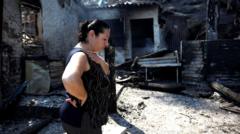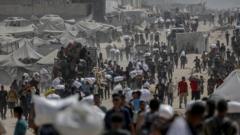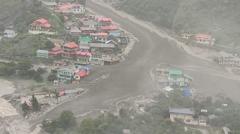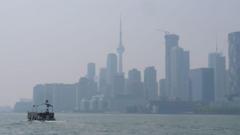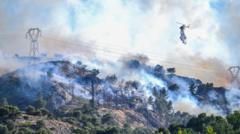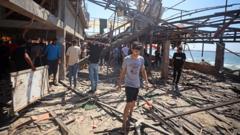Fifty years after American forces withdrew from Vietnam, the landscapes of Ho Chi Minh City serve as both historical markers and symbols of transformation. A visit to the Pittman apartment building illustrates the chaos and emotion tied to that pivotal moment in history.
Revisiting the Legacy of the Vietnam War: A Tourist's Pilgrimage to the Past

Revisiting the Legacy of the Vietnam War: A Tourist's Pilgrimage to the Past
Exploring the remnants of the Vietnam War, a journalist shares insights from Ho Chi Minh City, reflecting on the experiences and memories tied to the architecture left behind.
In the heart of Ho Chi Minh City, remnants of a tumultuous past are juxtaposed against a bustling modern metropolis. One such landmark is the Pittman apartment building, a structure once frequented by U.S. personnel during the Vietnam War. On a recent visit, I found myself drawn to its rooftop, where poignant memories of April 29, 1975, linger.
Amidst the ever-evolving city skyline, Nguyen Van Hiep, now in his seventies, recalled the frantic scenes as South Vietnam crumbled. Living next door at the time, he witnessed an American helicopter precariously land on a rooftop platform barely suited for its weight. The sharp contrast of an ordinary building marked by extraordinary chaos stood before us, a memory preserved in Hiep's mind.
As people clamored to escape, the confusion and urgency were palpable. “Only those in the building could go up,” he said, a hint of nostalgia creasing his brow. The airborne escape became emblematic of desperation, yet a renowned photograph of the event captured this moment with an erroneous context—it was misattributed as a scene from the U.S. Embassy.
This building, a silent witness of a pivotal event, tells stories of those who both fled and remained. Walking through its corridors, I felt the echoes of history that resonate deeply within Vietnam’s evolving identity. The narrative of the past clings stubbornly to these walls, embodying a legacy that continues to shape the nation’s collective memory.
As I left the Pittman, the images of that frenetic rooftop scene stayed with me. The building stands not just as a remnant of war, but as a testament to resilience—a reflection of a nation that has since transformed and thrived, moving forward while acknowledging its complex history.



